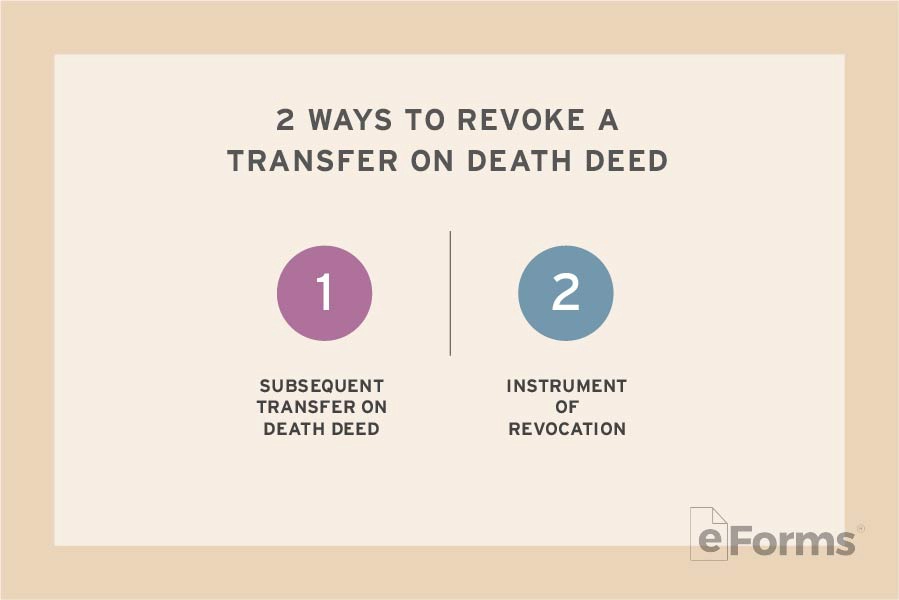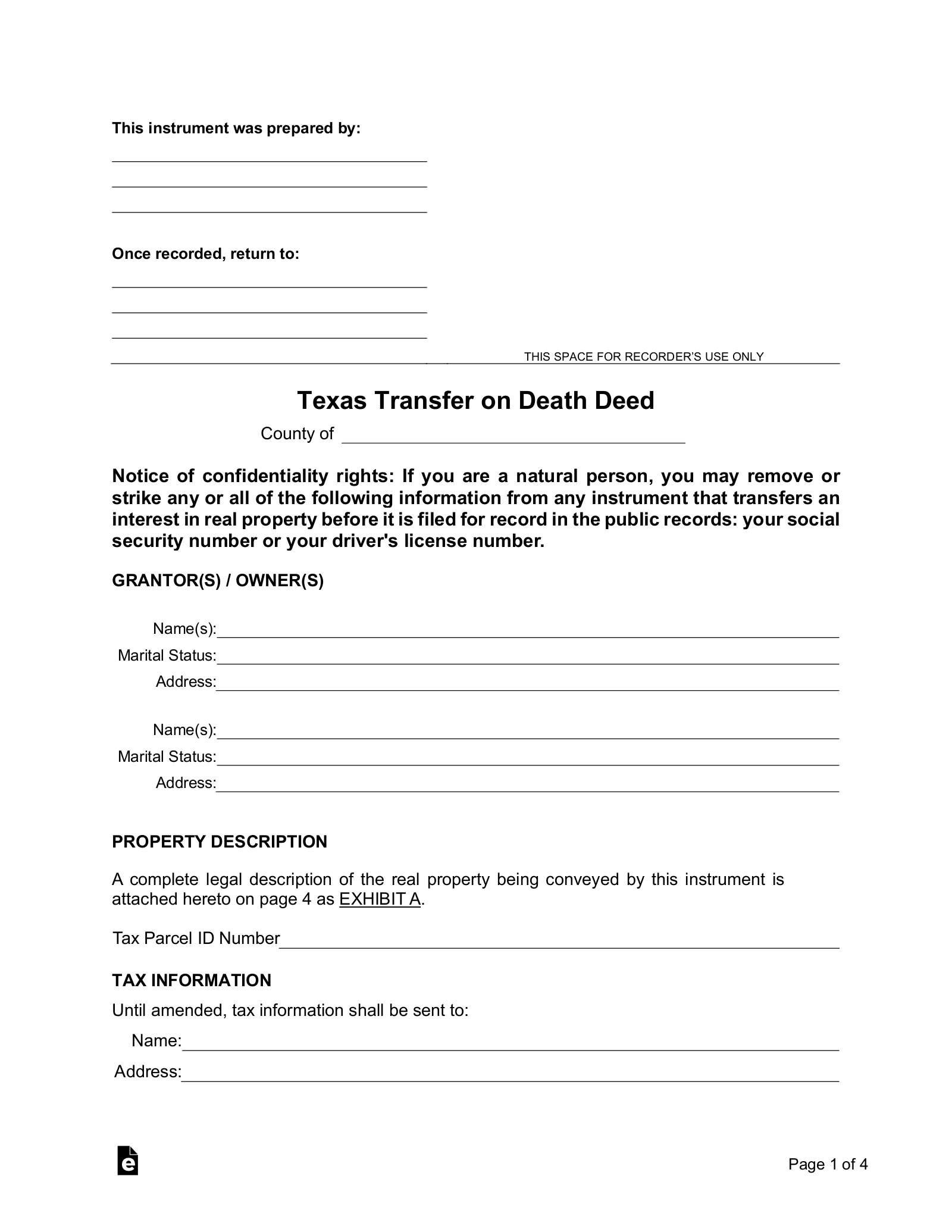Updated April 12, 2024
A Texas transfer on death deed is a document that allows the owner of real property to transfer their ownership to a designated beneficiary at the time of their death. Using this deed allows the beneficiary to skip the lengthy probate process.
Table of Contents |
Requirements
- Notary: Required.[1]
- Witnesses: Not required
- Recording: Before the transferor’s death in the deed records in the county clerk’s office of the county where the real property is located.[2]
Legal Description
A legal description is a required section on a transfer on death deed. It provides the exact boundaries and physical attributes to identify the real property and typically follows the Public Land Survey System (PLSS), which divides land into townships, ranges, and sections. It also gives exact measurements of the property using fractional or metes-and-bounds descriptions.
This can be found on the property deed or by accessing deed records via the county clerk’s office in the county where the property is located.
Example
“Lot 3, Block 4, Johnson Addition, according to the map or plat thereof recorded in Volume 13, Page 22, Plat Records, Travis County, Texas.”
Revocation

The transferor may revoke all or part of the transfer on death deed by using one of the following forms:[3]
- A subsequent transfer on death deed that revokes the preceding transfer on death deed or part of the deed expressly or by inconsistency
- An instrument of revocation that expressly revokes the transfer on death deed or part of the deed
For the revocation to take effect, the transferor must record the new form prior to their death in the county clerk’s office of the county where the property is located.
A transfer on death deed may not be revoked or superseded by a will.
How to Record
A transfer on death deed must be recorded before the transferor’s death in the deed records in the county clerk’s office of the county where the real property is located.[2]


